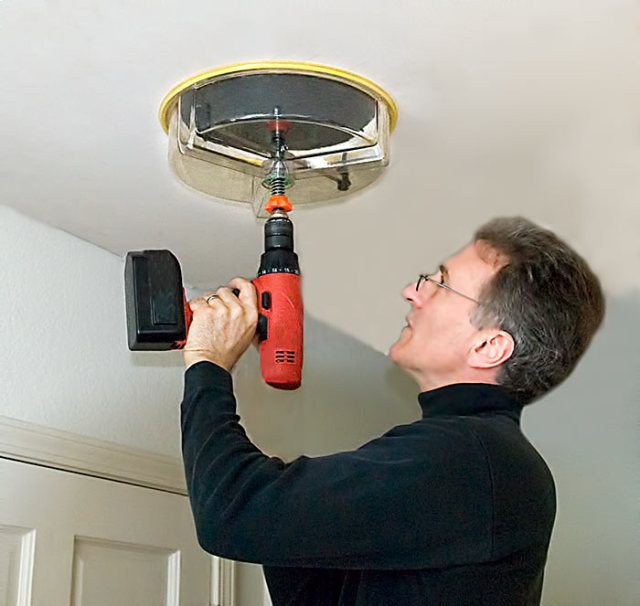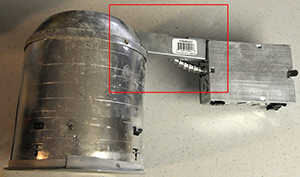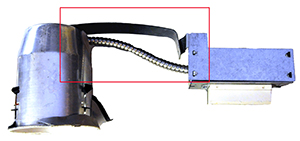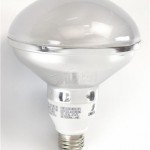Monday�, August 1st�, 2011
Many buildings (residential, retail and commercial) have 6” recessed lighting fixtures in their hallways, restrooms, board rooms, lobbies, stairwells, etc., where down lighting fixtures were needed and installed.
With the cost of electricity going up almost every 6 months, energy efficiency becomes a higher priority on everyone’s minds. We decided to weigh in with some comments sent to us in regards to other light bulb options that can be used in recessed lighting that is more energy efficient, while keeping the cost down. The larger the building, the more this consideration is important to the bottom line.
A few months ago at Total Lighting Supply, we were sent a new fluorescent screw in retrofit, called the “Top Spiral” R40 CFL (which is also available as a “Top Spiral” R30 CFL). A retrofit refers to the addition of new technology or features to older systems. Note that the “Top Spiral” R40 CFL (or R30) fluorescent spiral should not be confused or seen as the same as the other fluorescent R40s and R30s that are available.The retrofit light bulb that we were sent for the 6” recessed light is a compact fluorescent (CFL). We were pleasantly surprised to find that it actually outperforms the rest of the other recessed lights by far.
Here’s what we did: we replaced our old 65 watt incandescent flood with this new “Top Spiral” R40 CFL. Since the fixture already had an incandescent R40, all we had to do was to swap out the light bulbs. If you were to swap out a incandescent R40 with a “Top Spiral” R30 CFL or vice verse (incandescent R30 with a “Top Spiral” R40 CFL), keep in mind that in doing so, you will also need to use a different trim to accommodate the diameter of the bulb.
The new bulb, shown here, costs less than $10 and will out last the incandescent energy pig significantly longer. Is it worth your time and energy to swap out? We spent $4.95 on the incandescent R40 bulb. The “Top Spiral” R40 CFL costs $9.50. So, you’re thinking, where’s the savings in that? You realize a savings with the “Top Spiral” R40 CFL by way of how much longer it will last: 8,000 hours versus 2,000 hours for the incandescent. That means the “Top Spiral” R40 CFL lasts 4 times longer than the incandescent R40. Right off the bat, there is a $4.55 savings. And, in large building applications, that will help to keep your maintenance costs down.
You will also realize a huge savings in energy consumption. The incandescent R40 is 65 watts versus the 30 watts for the “Top Spiral” R40 CFL. Remember, wattage is not the brightness of the bulb, but a measurement of how much energy it consumes. Another energy savings aspect is the heat output of the bulb: the incandescent puts out a lot of heat. So much, in fact, that we know of a gallery in Aspen CO, that runs their air conditioning in the winter to offset the heat output of their incandescent R40’s!
Is one bulb brighter than the other? Brightness of a bulb is measured in two ways: candlepower and lumens. Our government mandates to the industry that brightness of a bulb be expressed in lumens. The “Top Spiral” R40 CFL is almost 3 times as bright as the incandescent R40: 1640 lumens versus 580 lumens, respectively.
If all of this wasn’t enough to impress you, here’s one more aspect: this new fluorescent also has a better light spread and better aesthetic qualities than the incandescent counterpart. If you are lighting a hallway, a kitchen or a front desk at a hotel, it will provide a good, even, soft light, without the harsh shadows that the incandescent has. The light output of the “Top Spiral” R40 CFL (or R30) is a better task light to work under because of the even light spread. Incandescent R40’s typically make a hallway look like a mining shaft due to a narrower beam spread.
You can see why we are excited about this new fluorescent “Top Spiral” R40 CFL reflector bulb; we give it a 5 star rating. If you are interested in saving money and energy, you will want to swap out your incandescent R40s (or R30s) for these “Top Spiral” R40 CFLs (or R30s). These bulbs are also offered at bulk price rates.
Coming up in the next article: comparing LED light sources to fluorescent. Which one is better and more affordable? What applications are best for either light source?

Buy the Top CFL Reflector bulb today!










